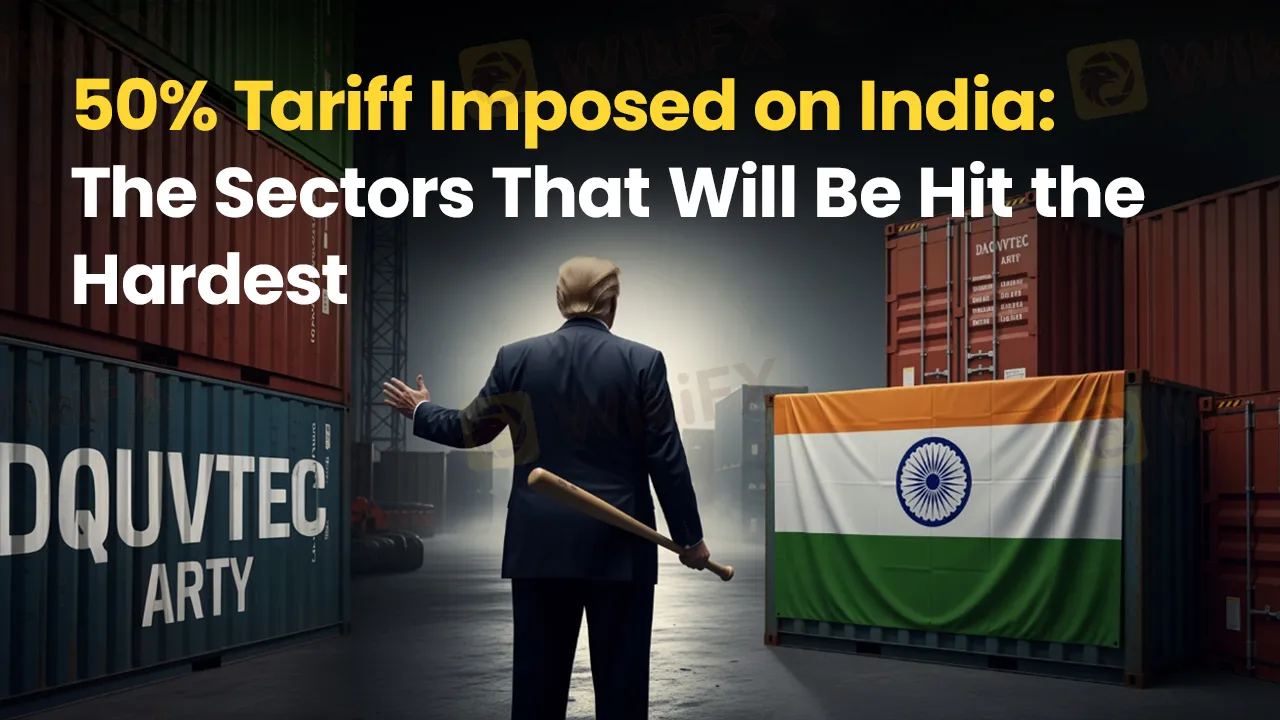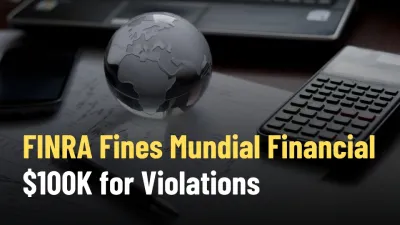50% Tariff Imposed on India: The Sectors That Will Be Hit the Hardest
Abstract:Finally, the day (August 27, 2025) arrived that India did not want. The imposition of 50% tariff by the US administration on most products exported from India. As per the US, the tariff is largely due to India continuing to purchase Russian oil. The extra 25% duty was added over 25% imposed at the beginning of August 2025 as India refused to stop purchasing Russian crude and defence hardware. Check out the sectors that will be hit the hardest with this tariff increase.

Finally, the day (August 27, 2025) arrived that India did not want. The imposition of 50% tariff by the US administration on most products exported from India. As per the US, the tariff is largely due to India continuing to purchase Russian oil. The extra 25% duty was added over 25% imposed at the beginning of August 2025 as India refused to stop purchasing Russian crude and defence hardware. Indian products are levied import tariffs, which are 16 points, 31 points and 35 points greater than those from China, most South-east Asian nations and South Korea, respectively.
Two-thirds of Indian Shipments Carry 50% Tariff Burden
The US remains the largest export market for India with annual shipments valued at around $86.5 billion. Two-thirds of the shipments will now come under the purview of a 50% tariff, potentially leading to job losses and production cuts across several sectors.
Experts express fear about Indian products losing competitiveness due to heavy import taxes levied by the US. It could easily wipe off one percentage point from the Indian Gross Domestic Product (GDP) growth this fiscal year. The jobless rate has already grown to 7.1% across cities in India. Job losses will likely mount in the anticipation of a massive drop in shipments to the US.
The Sectors That Will Likely be Jolted the Most in India
While electronics, petroleum products and generic pharmaceutical sectors are exempt from the tariffs, aluminium, copper and steel sectors will witness a 25% tariff. However, job-oriented sectors such as textiles, jewellery, leather and seafood are under the 50% tariff burden. Exports from these sectors could drop as high as 70%. In value terms, the drop could be from $60.2 billion to $18.6 billion. The overall shipments could see a decline of 43%, according to Ajay Srivastava, ex- Indian trade official and founder of the Global Trade Research Initiative.
Many companies shipped products to the US before the cutoff date, i.e., August 27, 2025. Now, as the tariff rates widened to 50%, exporters will either need to absorb costs or lose market share to countries such as Mexico, Bangladesh and Vietnam. Absorbing costs seems impossible for many US-focused export units in India.
Textile Industry at 30% Cost Disadvantage Compared to Bangladesh, Vietnam and Cambodia
The $179 Indian textile industry exports $37.7 with the US accounting for almost $10.3 billion. With the 50% tariff into effect, Indian textile products stand at a 30% cost disadvantage compared to Vietnam, Cambodia and Bangladesh.
Even if the US lowers the tariff rate later, competitors such as Vietnam, China, Turkey, Pakistan, Kenya, Mexico and Guatemala will likely have locked in market share, potentially dethroning India from one of the key markets.
An Overview of India-Russia Oil Partnership
India is the third-largest oil consumer globally and the leading buyer of Russian seaborne crude. Russia meets approximately 40% of the oil requirements in India. Despite the Russian crude discounts reducing to around $2.50 a barrel from $20-$25 below benchmark Brent crude in 2022, India continues to purchase oil from Russia to secure energy supply at lower costs. The sudden fall could make India susceptible to price swings globally.
Vinay Kumar, the Indian ambassador to Russia, commented that the country will continue purchasing oil from wherever it finds the best deal and adopt measures to counter the US tariffs. He further added that India was paying for Russian oil in rupees, sparing it from using its US currency reserves. The country has a trade settlement working system in national currencies. Indian firms have supposedly saved $17 billion by purchasing Russian oil since the war broke out in Ukraine.
Coming to an Important Forex Update - WikiFX Masterminds - Where Traders Learn Outstanding Strategies
Want to join this group? Follow these steps-
1. Scan the QR code placed right at the bottom.
2. Download the WikiFX Pro app.
3. Afterward, tap the ‘Scan’ icon placed at the top right corner
4. Scan the code again.
5. Congrats, you have become a community member.

Read more

Scammed — Then Refunded: BSN Victims Finally Get Their Money Back
The first batch of victims involved in the BSN investment scam has received full refunds from Bank Simpanan Nasional (BSN), according to Sarawak DAP chairman and Stampin MP Chong Chieng Jen.

FINRA Fines Mundial Financial $100K for Violations
FINRA fines Mundial Financial Group $100K for compliance failures, AML violations, and unregistered principal activity.

GMI to Stop Global Operations from Dec 31, 2025; Don’t Miss the Final Withdrawal Deadline
Taking the financial market by surprise, GMI, one of the leading global forex and CFD brokers, announced its intention to close its global operations from December 31, 2025. Since the official shutdown announcement, traders have been concerned about the status of fund deposits and withdrawals. They have understandably been searching for answers to these questions amid this announcement made by the group. Read on as we share with you key details emerging from the development.

Police Smash Forex Scam Network Operating from Pahang
A police raid on an unassuming home in Pahang has exposed a covert app-based fraud operation targeting foreign investors.
WikiFX Broker
Latest News
Should You Delete Every Indicator from Your Charts? Let’s Talk Real Trading
Is ZarVista Legit? A Critical Review of Its Licenses and Red Flags
Stop Chasing Green Arrows: Why High Win Rate Strategies Are Bankrupting You
Stop Trading: Why "Busy" Traders Bleed Their Accounts Dry
Scam Victims Repatriated: Malaysia Thanks Thailand’s Crucial Help
XTB Review 2025: Pros, Cons and Legit Broker?
Cabana Capital Review 2025: Safety, Features, and Reliability
Why You’re a Millionaire on Demo but Broke in Real Life
Year of the Fire Horse 2026: Which Zodiac Signs Have the Strongest Money Luck in Trading?
Common Questions About OtetMarkets: Safety, Fees, and Risks (2025)
Rate Calc

